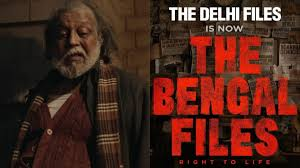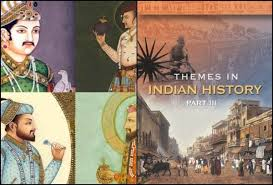The Cinematic Blueprint
of Political Polarisation
When Joseph Goebbels declared that cinema was one of the most powerful
weapons in the arsenal of the state, he was not being hyperbolic. As Nazi
Germany perfected the art of propaganda, film became more than a medium of
entertainment—it became an instrument of indoctrination. Almost a century
later, the template remains eerily relevant. In democracies and autocracies
alike, propaganda cinema continues to thrive, shaping public opinion, altering
historical memory, and manipulating national consciousness.
The Craft of Conviction
At its core, a propaganda film does not merely present a narrative—it
constructs a moral universe. Villains and heroes are painted in broad,
unambiguous strokes. Complex socio-political realities are reduced to binary
choices: nationalism versus anti-nationalism, civilization versus barbarism, us
versus them. When such simplifications are backed by powerful imagery, emotive
music, and gripping performances, the impact on the psyche of viewers can be
profound.
Propaganda cinema cloaks itself in patriotism and purpose. It portrays
dissenters as traitors, minorities as threats, and ideological opponents as
enemies of the state. The intention is never just storytelling—it is
nation-building, or more aptly, nation-moulding.
Yet, it is important to distinguish between dissent and hate. Not all
political cinema is propaganda. Films like Kissa Kursi Ka (1977) and Aandhi
(1975) questioned power and critiqued the system, but they did so without
vilifying communities or weaponizing religion. They were voices of resistance
in the truest democratic sense—satirical, symbolic, and aimed at the abuse of
authority, not at inciting societal divisions. Unlike modern propaganda films,
these classics did not seek to create an "enemy within." They
questioned rulers, not citizens.
The Indian Context: Beyond Entertainment
In contrast, the recent surge in politically charged films such as The
Kashmir Files, The Kerala Story, and the upcoming The Delhi Files
marks a troubling evolution. These films do not merely reflect the political
mood—they are part of the machinery shaping it. Wrapped in the language of
"truth-telling" and "bringing hidden histories to light,"
such films often distort facts, cherry-pick incidents, and weaponize trauma.
Now, Vivek Agnihotri, the director of The Kashmir Files, is
working on The Bengal Files, a film purportedly based on political
violence in West Bengal. Given Agnihotri’s established pattern—where history is
viewed through the lens of communal victimhood and ideological warfare—The
Bengal Files appears less like investigative storytelling and more like the
continuation of hate politics through cinema. The project, unveiled amid
political turbulence in Bengal, seems poised to further polarize public opinion
in a state already grappling with deep-rooted tensions. Its objective appears
less about truth and more about reinforcing a national narrative of siege and
division.
Follow the Money: Who’s Funding the Propaganda?
The success of these films isn't accidental—nor is their financing merely
artistic. A closer look reveals an intricate ecosystem where ideology, money,
and political power work hand in hand.
1. Producers with Political Links
Many of these films are backed by producers with visible or tacit ties to
the ruling party.
The Kashmir Files, for example, was co-produced by Zee Studios
and Abhishek Agarwal Arts—the latter run by a Hyderabad-based
businessman known for his proximity to BJP leaders. The Kerala Story was
produced by Vipul Amrutlal Shah, a filmmaker whose public statements
often mirror Hindutva rhetoric.
2. Government Patronage as Indirect Funding
No government official writes a cheque—but support comes in subtler, more
powerful forms:
- Tax exemptions granted by BJP-ruled states,
- Free screenings for students, police, and bureaucrats,
- Public endorsements by top leaders including the Prime Minister,
- And amplification
by the BJP’s digital ecosystem, giving these films the kind of reach
most filmmakers can only dream of.
Such soft backing dramatically reduces costs and guarantees
attention—making it a kind of de facto state subsidy.
3. Shadow Funders and Ideological Venture Capital
A number of relatively unknown production houses have suddenly emerged with
unexplained funding muscle. These are often linked to:
- Real estate and
mining interests,
- Businessmen aligned
with ruling party agendas,
- Or shell companies
connected to media empires sympathetic to the regime.
While direct evidence is scarce due to opaque financial structures,
patterns of political timing and exclusive access to resources strongly suggest
orchestrated support.
4. Ideologically Driven Directors
Directors like Vivek Agnihotri, who calls himself a “cultural
warrior,” are no longer just storytellers—they are missionaries with a camera.
His close appearances with RSS-affiliated organizations and ideological think
tanks like India Foundation suggest that these films are not independent
creations—they are commissioned narratives. The Bengal Files, in this
context, appears not as journalism through art but propaganda through
celluloid.
Cognitive Capture: The Mind as a Battlefield
A critical aspect of propaganda films is their ability to bypass critical
reasoning. Neuroscience suggests that emotionally charged visuals activate the
amygdala—the brain’s fear center—suppressing rational thought and enhancing
memory retention. In other words, when a film shocks or angers us, it leaves a
deeper impression than a news article or policy paper ever could.
This is particularly dangerous in a society where media literacy is low and
cinema remains the most accessible form of mass communication. A citizen who
watches a communal propaganda film may not consciously become prejudiced, but
the seeds of bias are sown. Repetition, emotional manipulation, and social
reinforcement (via WhatsApp forwards, social media memes, or television
debates) water those seeds until they blossom into conviction.
What begins as “just a movie” soon becomes the basis of “I heard
somewhere,” which hardens into “I know this happened.” The leap from perception
to belief is barely noticed.
From Socio-Politics to Geopolitics
The domestic impact of propaganda films is grave, but their geopolitical
implications are equally troubling. When films demonize an entire religion or
community—be it Muslims in India, immigrants in the U.S., or Uyghurs in
China—they don’t just influence internal discourse. They signal to the world a
nation’s ideological trajectory.
India, once proud of its pluralism, now finds itself defending against
charges of Islamophobia, partly because of the global reach of its domestic
narratives. When state-backed or state-endorsed films project a unidimensional
nationalism, it affects bilateral relations, diplomatic equations, and even
trade alliances.
Moreover, authoritarian regimes have long understood the power of cinema in
projecting soft power abroad. Russia, China, and Turkey have invested heavily
in period dramas and nationalist blockbusters that export their worldview
globally. The battle for narrative supremacy has moved beyond battlefields and
boardrooms—it now plays out on Netflix, YouTube, and Prime Video.
The Fragile Viewer: Consent Without Awareness
Perhaps the most insidious feature of propaganda cinema is its subtle
violation of the viewer’s consent. When we watch political speeches or campaign
ads, we do so with a sense of guardedness, aware that persuasion is the intent.
But cinema disarms us. We walk into a theatre seeking entertainment, not
ideology. We let our guard down, suspend disbelief, and allow ourselves to be
swept away.
This is precisely what makes propaganda films so effective: they do not
argue, they hypnotize.
In a healthy democracy, films should provoke thought, not paralyze it. They
should ask questions, not issue verdicts. When cinema begins to echo only one
kind of nationalism, one kind of history, one kind of heroism—it ceases to be
art and becomes artillery.
Conclusion: Between Truth and Trauma
As citizens, we must remain vigilant. Not all films are propaganda, and not
all propaganda films wear the mask of nationalism. Sometimes, the bias is
subtle—a line here, a stereotype there. Sometimes, it is blatant. But in every
case, the effect is cumulative.
We must ask: Who made this film? Who funded it? Why now? Whose version of
history is being told? What is being omitted? And what purpose does it serve?
Cinema has the power to heal, to build bridges, to imagine new futures. But
when wielded irresponsibly, it can also inflame, divide, and destroy. A nation
that treats film as a weapon rather than a mirror will eventually lose sight of
its own reflection.
Author: Siddhartha Shankar Mishra is an Advocate at the
Supreme Court of India. He writes on law, politics, and culture, often
exploring the intersection between power and perception.









.jpeg)